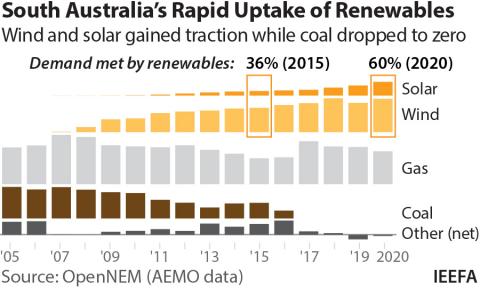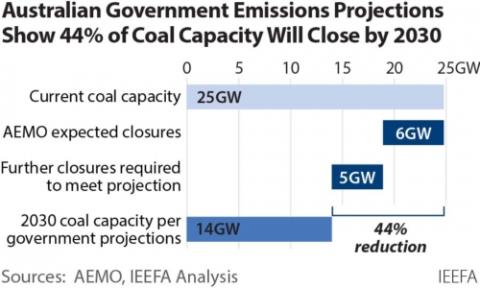Australia's opportunity for a zero-emissions electricity grid
Download Full Report
View Press Release

Key Findings
There will need to be fundamental changes in the way the grid is planned, designed, built and operated.
The age of fossil fuel power generation is all but over. The energy sector needs to re-think how the electricity system will operate in the future.
We recommend that current planning and design should consider a scenario that involves shifting to a new grid framework that does not rely on traditional inertia.
Executive Summary
Australia’s National Electricity Market (NEM) is at the forefront of the transition from thermal power generation to renewable energy. With planning and reforms currently in development, there is now an opportunity to define the end-state of the transition, resulting in a grid that is future ready.
In the past, the large spinning masses of the national coal generator fleet were always there providing the inertia to smooth out disturbances and faults that affect grid frequency, and which might otherwise lead to instability and potential blackouts.
Grid security has become a primary concern for grid operators and planners
Now that renewables are on the rise and coal plants are being squeezed out of the market, there is less inertia in the system, and grid security has become a primary concern for grid operators and planners.
To address this concern, energy agencies are establishing a new market for procurement of inertia. Wind, solar and batteries are connected to the grid with power electronics and do not provide inertia, but they can be configured to emulate the inertial response of spinning machines, and therefore provide the same stabilising services. As the generation mix shifts, this so-called ‘virtual’ inertia will contribute to grid stability through participation in the inertia market, alongside traditional synchronous inertia from thermal generation plants, hydro plants, and other sources and loads that are synchronously connected to the grid. However, technologies that provide ‘virtual’ inertia have substantially different operational characteristics compared to traditional power plants.
To make way for the necessary renewable energy future, there will need to be fundamental changes in the way the grid is planned, designed, built and operated. Along the way, as the grid becomes more distributed and flexible, There will need to be fundamental changes in the way the grid is planned, designed, built and operated.
Along the way, as the grid becomes more distributed and flexible, synchronous machines will become increasingly difficult to accommodate. In fact, the technologies that allow renewables and batteries to replace physical inertia, if correctly designed and controlled, would lead to a more reliable, secure and higher-performing power system that does not rely on inertia at all.
With 225 gigawatts (GW) of proposed renewable and battery projects in Australia, capital markets and project developers are lining up to deliver the next generation of energy infrastructure. Sustained investment will rely on broad national acceptance of a future grid framework that is substantially different to the grid of today – one highly automated and based on non-synchronous renewable energy generation.
We recommend that current planning and design should consider a scenario that involves shifting to a new grid framework that does not rely on traditional inertia.
Please view full report PDF for references and sources.

















